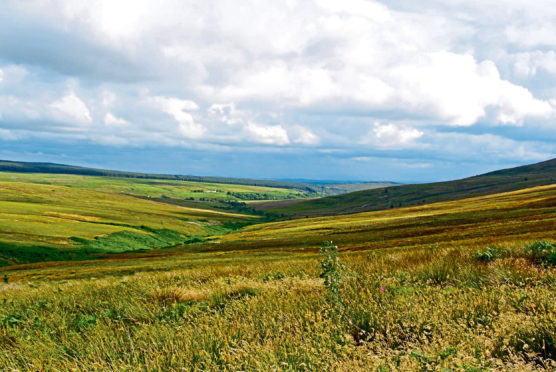The south of Scotland’s largest community buyout in terms of land value and area is set to go ahead after a herculean campaign by the Langholm community in Dumfriesshire to secure funds to buy more than 5,000 acres from the region’s biggest landowner, the Duke of Buccleuch.
Discussions continue over a further 5,300 acres which the Langholm community has expressed an interest in buying from Buccleuch Estates.
This follows an earlier completed buyout deal of 750 acres between Newcastleton Community Trust and Buccleuch. Another community buyout is expected when residents of Wanlockhead in Dumfriesshire – Scotland’s highest village – purchase 3,900 acres from Buccleuch.
Community ownership of large estates in Scotland is not a new concept. The 18,000-acre Glendale Estate on the Isle of Skye has been in the ownership of the local community for more than a century, and the 69,000-acre Stornoway Estate on the Isle of Lewis will soon celebrate 100 years of community ownership.
However, until these recent deals with Buccleuch Estates, community ownership of large landholdings was common to only the north-west of Scotland, mainly the Highlands and islands and other crofting areas.
Now the residents of Wanlockhead, Langholm and Newcastleton, through negotiation with Buccleuch Estates, are making headlines by bringing community ownership of land to the south of Scotland.
Although these buyouts represent only a small percentage of Buccleuch Estates’ 200,000 acres, they are a step in the right direction and all the parties involved should be commended for what they have achieved.
While Buccleuch Estates in the south of Scotland has been taking steps to increase diversity of land ownership, in the north of Scotland, Danish billionaire Anders Povlsen has, over the last 14 years, purchased a dozen sporting estates covering 220,000 acres to become Scotland’s largest private landowner.
For Scotland’s land reform journey, which aims for greater diversity of land ownership, it looks like a case of one step forward, accompanied by one step back.
Mr Povlsen is a keen environmentalist, with a long-term plan to re-wild his Highland estates and protect what he considers to be the UK’s last true wilderness.
He is not alone. As Highland sporting estates come on the market, today’s new owner is likely to be an environmentalist with little interest in grouse shooting or deer stalking.
With such focus on re-wilding across vast areas there is a real danger that people and communities are forgotten.
Land reformers correctly point out that for several millennia the Highlands supported a healthy population of people alongside a healthy natural environment; it is only in the last two centuries that communities have declined or even disappeared.
That wilderness, which the environmentalists dream of, has only been a wilderness since the Clearances.
People are at the heart of land reform policy which aims to reverse population decline in rural areas by creating economic opportunity and resilient communities.
For many community landowners the focus is on repopulation of areas that have become a wilderness. That involves community facilities, affordable housing and providing space for small businesses. These are priorities which may not be at the top of an environmentalist’s agenda.
The Land Commission’s recent recommendation to enshrine in law a public interest test for significant land transactions should ensure future land sales meet the interests of locals.
How these ambitious environmentalists might fair under such a test, whether it be individuals like Mr Povlsen or organisations like the RSPB, remains to be seen.
At least it will serve as a reminder that people should be core to any healthy natural environment.
* Christopher Nicholson is chairman of the Scottish Tenant Farmers’ Association.
